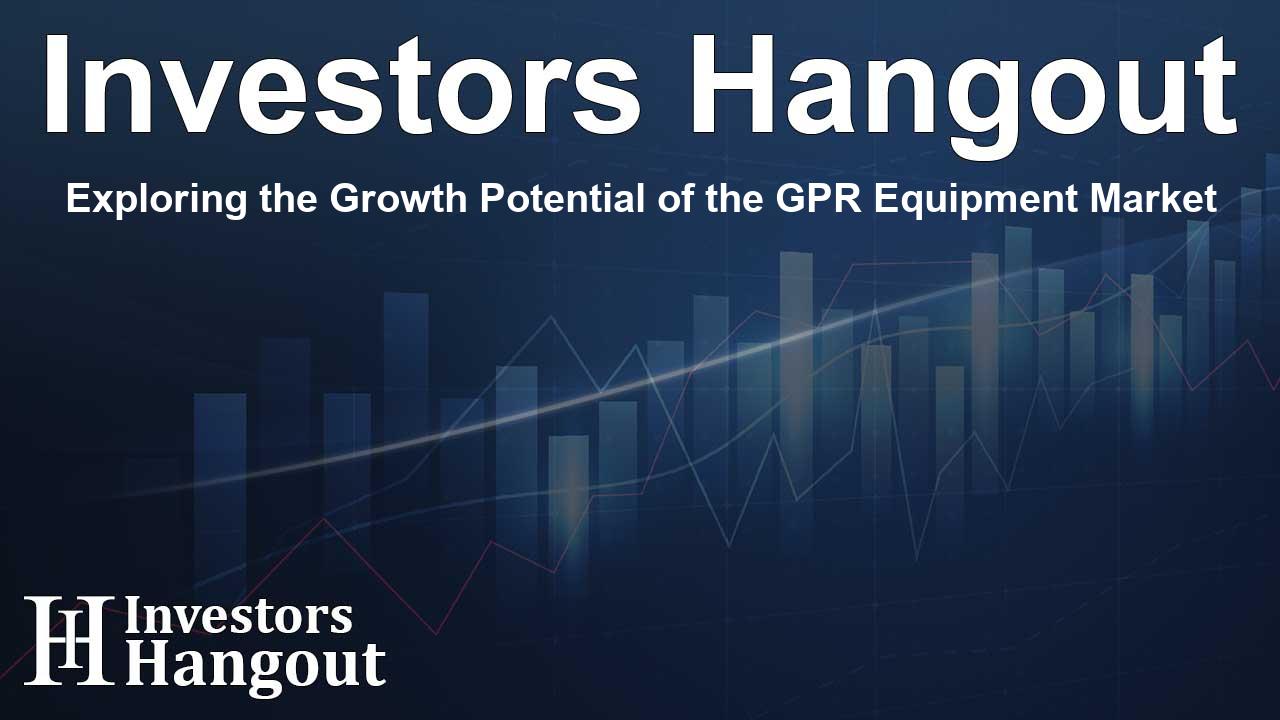Exploring the Growth Potential of the GPR Equipment Market

Market Overview of Ground Penetrating Radar Equipment
The global Ground Penetrating Radar (GPR) equipment market stands on the verge of significant growth, with expectations to reach a market value of approximately $800 million in the coming decade. With a compound annual growth rate (CAGR) projected at 5.2%, this market is attracting attention across multiple industries.
Current Market Dynamics
A surge in demand for GPR technologies is being driven by various sectors such as construction, archaeology, and environmental monitoring. These industries favor non-invasive approaches to exploration and surveying due to their efficiency and precision. The technological innovations that improve radar systems and software capabilities are paving the way for increased accuracy and reliability in applications.
Market Challenges
Despite the promising growth, the market faces notable challenges. High costs associated with GPR equipment can deter smaller entities from investing, while the need for skilled professionals to operate these systems can limit accessibility. Furthermore, differing regulations and standards in various regions may affect the rate of adoption of GPR technologies.
Market Segmentation Insights
GPR equipment is categorized into various segments based on product type, application, end user, technology, and distribution channels:
By Product Type
- Handheld GPR Systems: These systems are compact and highly portable, allowing for easy maneuverability in various environments, including construction sites and emergency response scenarios.
- Wheeled Systems: These cart-based units are efficient for scanning larger flat surfaces, making them suitable for civil engineering applications.
- Truck-mounted Systems: Designed for extensive surveys over longer distances, these systems are ideal for specialized engineering projects and utility mapping.
Applications Driving Demand
The application of GPR technology spans across numerous fields:
Civil Engineering
In civil engineering, GPR plays a pivotal role in infrastructure projects such as roadway and bridge assessments, where it aids in the detection of subsurface issues that may affect construction integrity.
Archaeology
Archaeologists benefit from GPR technology to locate artifacts and buried structures without the need for excavation, preserving historical sites while conducting research.
Environmental Monitoring
The increasing focus on environmental health propels the use of GPR for detecting underground contamination and monitoring changes in soil conditions.
Emerging Trends and Innovations
The integration of artificial intelligence with GPR technology has emerged as a significant trend. This pairing enhances data analysis capabilities, making GPR applications not only more effective but also expanding their utility across various sectors.
Technological Advancements
There are ongoing advancements in GPR technologies, including the development of multi-frequency antennas and real-time data processing. Such innovations are crucial in not only making surveys faster but also enhancing the accuracy of the data collected.
Competitive Landscape
The GPR equipment market features a competitive landscape with key players focusing on technological differentiation, usability, and comprehensive service offerings. Companies continue to enhance their GPR portfolios through strategic partnerships and acquisitions, ensuring they maintain an edge within the industry.
Market Consolidation
Recent years have seen leading companies work to consolidate their positions in the market. For instance, mergers and collaborations aim to create integrated subsurface mapping solutions, combining hardware with advanced software analytics to optimize user experience.
Future Market Outlook
Looking ahead, the GPR equipment market is set to open doors to opportunities, especially in emerging markets with rapid urbanization. Incorporating GPR technologies into diverse sectors, from agricultural applications to infrastructure development, signals a burgeoning demand for effective subsurface investigation tools. The interest in adapting GPR systems for various novel applications underlines opportunities for growth.
Frequently Asked Questions
What is the projected market size of the GPR equipment industry?
The GPR equipment market is expected to reach approximately $800 million by the year 2034.
What factors are driving the demand for GPR technologies?
Growing sectors such as construction, archaeology, and environmental monitoring are major contributors to the rising demand for GPR technologies.
What challenges does the GPR equipment market face?
Challenges include high equipment costs and a shortage of trained professionals to operate these complex systems.
How is technology affecting the GPR market?
Innovations in radar systems and data analysis software are enhancing the accuracy and efficiency of GPR applications, leading to broader adoption.
What is the significance of GPR in civil engineering?
GPR technology is crucial in civil engineering for non-destructive testing of infrastructures, helping assess the condition of structures like roads and bridges.
About The Author
Contact Owen Jenkins privately here. Or send an email with ATTN: Owen Jenkins as the subject to contact@investorshangout.com.
About Investors Hangout
Investors Hangout is a leading online stock forum for financial discussion and learning, offering a wide range of free tools and resources. It draws in traders of all levels, who exchange market knowledge, investigate trading tactics, and keep an eye on industry developments in real time. Featuring financial articles, stock message boards, quotes, charts, company profiles, and live news updates. Through cooperative learning and a wealth of informational resources, it helps users from novices creating their first portfolios to experts honing their techniques. Join Investors Hangout today: https://investorshangout.com/
The content of this article is based on factual, publicly available information and does not represent legal, financial, or investment advice. Investors Hangout does not offer financial advice, and the author is not a licensed financial advisor. Consult a qualified advisor before making any financial or investment decisions based on this article. This article should not be considered advice to purchase, sell, or hold any securities or other investments. If any of the material provided here is inaccurate, please contact us for corrections.
